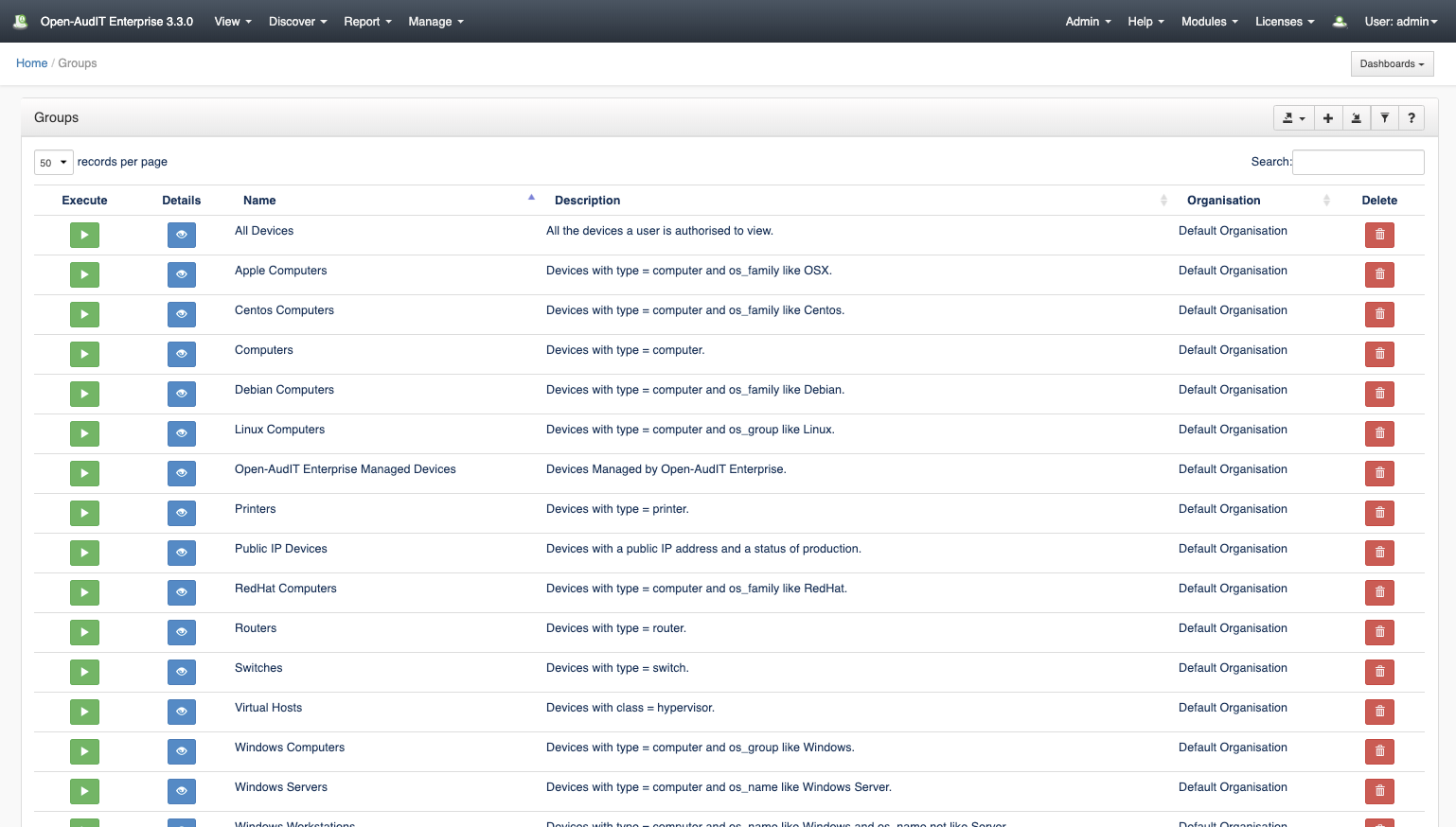...
Default Groups
There are sixteen default groups. They are below. The default group definitions can also be found in the application at Help -> Defaults -> Default Groups. You will see a list of the default groups and the attributes used to create them.
| Code Block | ||||
|---|---|---|---|---|
| ||||
mysql> SELECT name FROM groups;
+---------------------------------------+
| name |
+---------------------------------------+
| All Devices |
| Apple Computers |
| Centos Computers |
| Computers |
| Computers |
| Debian Computers |
| Linux Computers |
| Open-AudIT Enterprise Managed Devices |
| Printers |
| Public IP Devices |
| RedHat Computers |
| Routers |
| Switches |
| Windows Computers |
| Windows Servers |
| Windows Workstations |
+---------------------------------------+
16 rows in set (0.00 sec) |
Database Schema
...
Database Schema
The database schema can be found in the application is the user has database::read permission by going to menu: Admin -> Database -> List Tables, then clicking on the
...
| Code Block | ||||
|---|---|---|---|---|
| ||||
CREATE TABLE `groups` (
`id` int(10) unsigned NOT NULL AUTO_INCREMENT,
`org_id` int(10) unsigned NOT NULL DEFAULT '1',
`name` varchar(100) NOT NULL DEFAULT '',
`description` text NOT NULL,
`sql` text NOT NULL,
`link` text NOT NULL,
`expose` enum('y','n') NOT NULL DEFAULT 'y',
`edited_by` varchar(200) NOT NULL DEFAULT '',
`edited_date` datetime NOT NULL DEFAULT '2000-01-01 00:00:00',
PRIMARY KEY (`id`)
) ENGINE=InnoDB DEFAULT CHARSET=utf8; |
Example Database Entry
...
| language | text |
|---|---|
| theme | Eclipse |
...
details button for the table.
API / Web Access
You can access the
...
collection using the normal Open-AudIT JSON based API. Just like any other collection. Please
...
see The Open-AudIT API documentation for further details.
API Routes
...
Web Application Routes
In addition to the above, when accessing Open-AudIT using a web browser.
...
Default Items
Shipped are a set of default items. These can be found by going to menu: Help → Defaults → Dashboards
...
.
